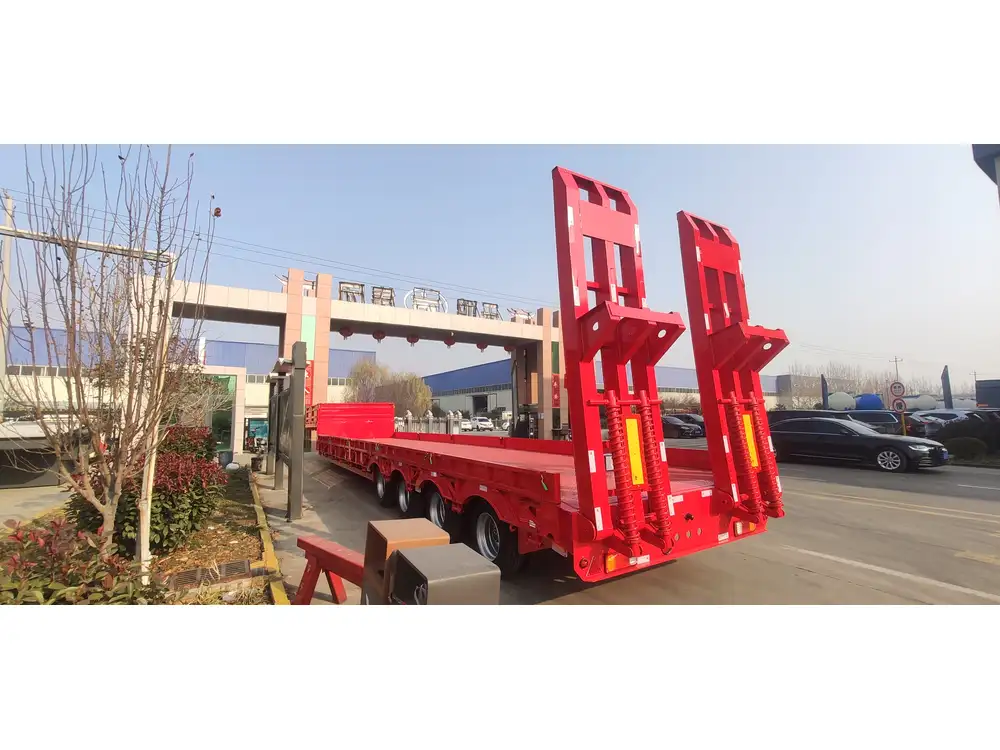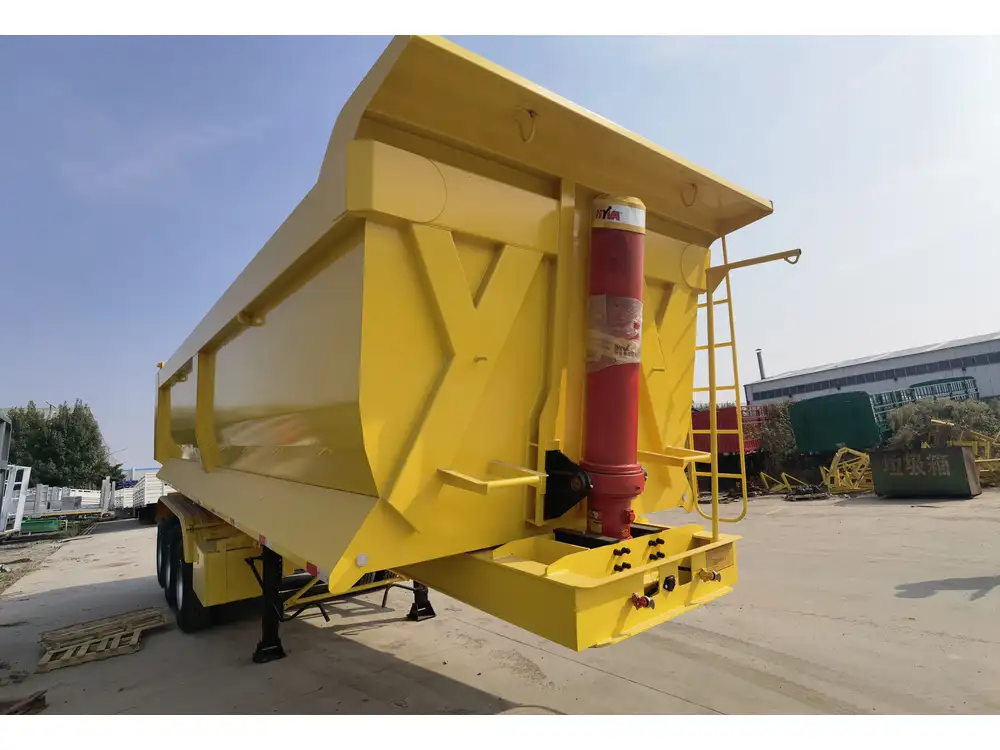Transporting a travel trailer requires a nuanced understanding of the various techniques and considerations involved in safely and efficiently moving these vehicles. This guide delineates the processes and equipment used, as well as safety measures that must be taken during transportation, ensuring that both the travel trailer and the transport vehicle arrive at their destination unscathed.
Understanding Travel Trailers
A travel trailer is a type of towed recreational vehicle (RV) designed for long-term leisure travel. Their popularity skyrocketed in recent years for their comfort and convenience. These trailers require careful handling during transport to avoid any damage or mishaps.
Types of Travel Trailers
- Conventional Travel Trailers: Standard models with diverse lengths and features.
- Toy Haulers: Designed with a garage space for carrying motorcycles or ATVs.
- Fifth Wheel Trailers: Equipped with a distinctive hitch that attaches to a pickup truck.
Understanding these types helps in determining the appropriate transportation methods.

Key Factors in Moving Travel Trailers on Flatbeds
Transporting travel trailers on flatbeds involves numerous considerations:
- Size and Weight: Knowing the dimensions and weight of the trailer is critical.
- Flatbed Specifications: The flatbed trailer must be rated to carry the weight of the travel trailer plus any additional cargo.
- Hitching Mechanism: Securing the trailer onto the flatbed requires specialized equipment.
- Loading and Unloading Techniques: Proper methods must be followed to ensure safety.
Table: Key Dimensions and Weight Considerations
| Type of Trailer | Average Length (ft) | Average Weight (lbs) | Max Load Capacity (lbs) |
|---|---|---|---|
| Conventional | 20-30 | 3,000-7,000 | 10,000 |
| Toy Hauler | 25-35 | 4,000-8,000 | 12,000 |
| Fifth Wheel | 25-40 | 7,000-15,000 | 20,000 |
Preparing for Transportation
Preparation is paramount for successful trailer transport. Below are some essential steps that must be followed:

Assessing the Trailer
- Inspection: Conduct a thorough pre-transport inspection. Inspect the chassis, lights, and tires to ensure everything is functioning.
- Weight Distribution: Assess how weight is distributed within the trailer to avoid swaying during transport.
Choosing the Right Flatbed
Choosing the right flatbed for the transport is essential. Factors to consider include:
- Load Height: The flatbed should accommodate the height of the trailer easily.
- Material and Strength: Ensure the flatbed is made from robust materials capable of supporting the trailer’s weight.
Required Equipment
Utilizing the right equipment ensures safety during transportation. This includes:
- Straps and Chains: Heavy-duty straps or chains are essential for securely fastening the trailer to the flatbed.
- Ramps: When loading a travel trailer, ramps help drive the trailer onto the flatbed without causing damage.

Securely Loading the Travel Trailer
The loading process is a decisive moment in the transportation of a travel trailer.
Steps for Loading
- Positioning: Align the flatbed parallel to the travel trailer’s hitch.
- Ramps Setup: Deploy ramps at a gentle angle for ease of loading.
- Drive-Up: If permissible, drive the trailer up the ramps onto the flatbed. Alternatively, a winch can be used if the trailer is not self-propelling.
- Centering the Trailer: Ensure that the trailer is centered on the flatbed for balanced transportation.
Securing the Trailer
After loading, proper securing is crucial.
- Use ratchet straps or chains, attaching them to prefabricated anchor points on the flatbed.
- Cross the straps in an “X” pattern over the trailer frame, ensuring tightness to eliminate any shifting during transit.

Safety Considerations for Transporting Travel Trailers
Ensuring safety during transport is imperative to protect both the trailer and other road users.
Road Regulations
- Permits: Some jurisdictions may require special permits if the trailer exceeds certain dimensions.
- Laws: Familiarize yourself with local laws regarding transporting trailers, especially over weight limits or special cargo.
Verifying the Load
Before setting out, walk around the vehicle to check:
- Correctly fastened straps and chains
- Proper operational lights on both the flatbed and the travel trailer
- The overall integrity of the setup

Handling the Transport Vehicle
The vehicle towing the flatbed plays a crucial role:
- Power and Capability: The towing vehicle must have sufficient power to handle the weight of the flatbed and trailer combined.
- Braking System: Ensure the vehicle is equipped with a suitable braking system capable of handling the added weight.
Table: Recommended Towing Vehicles
| Vehicle Type | Max Towing Capacity (lbs) | Engine Type |
|---|---|---|
| Full-Size Pickup | 10,000 – 30,000 | V8 or Diesel Engine |
| Heavy-Duty Truck | 15,000 – 40,000 | Turbo Diesel Engine |
| SUVs | 6,000 – 12,000 | V6 or V8 Engine |
Unloading the Travel Trailer Safely
Upon reaching the destination, unloading the trailer must be done with equal care.

Steps for Unloading
- Prepare the area: Ensure the unloading area is level and clear of obstacles.
- Remove Straps/Chains: Carefully unfasten the straps or chains while ensuring stability.
- Guide Down: When unloading, lower the trailer gently using ramps or a winch, ensuring a controlled descent.
Post-Transport Inspection
After unloading, conduct a walk-around inspection of the travel trailer to check for any signs of damage that may have occurred during transport.
Conclusion
Moving a travel trailer on a flatbed encompasses an intricate interplay of various factors. From selecting the right equipment and flatbed to ensuring safety through proper inspection and adherence to regulations, every step must be executed with precision. Understanding these processes not only ensures successful transport but also maintains the integrity and longevity of the travel trailer. Each aspect plays a crucial role in ensuring that your travel adventures remain enjoyable and trouble-free. By following the guidelines outlined in this article, you can navigate the complexities of travel trailer transportation with confidence and efficiency.



